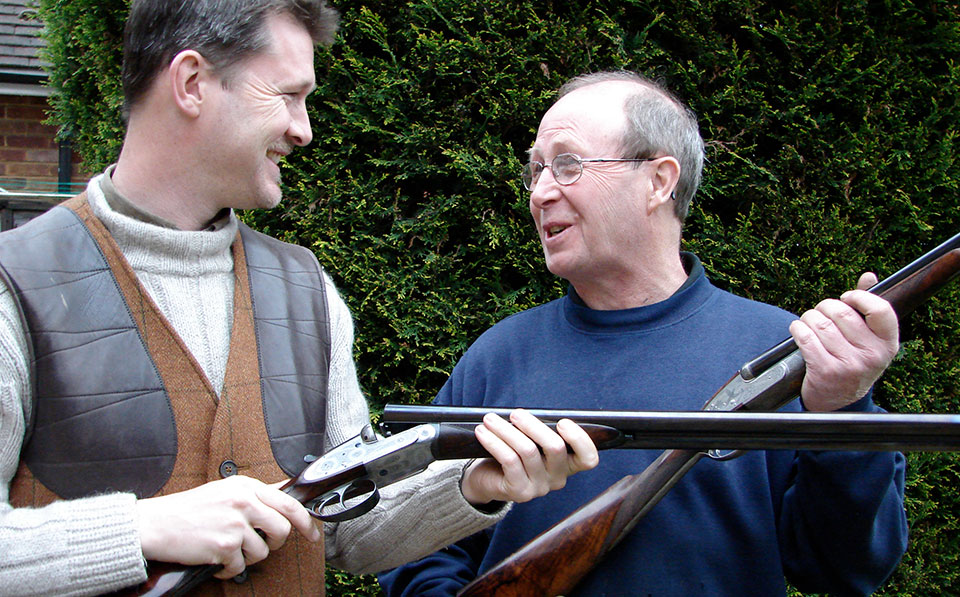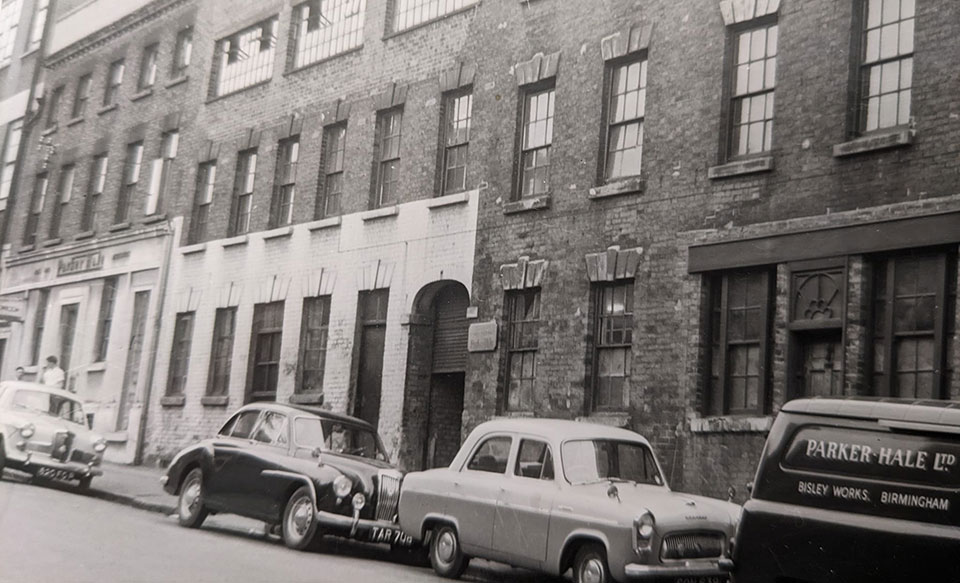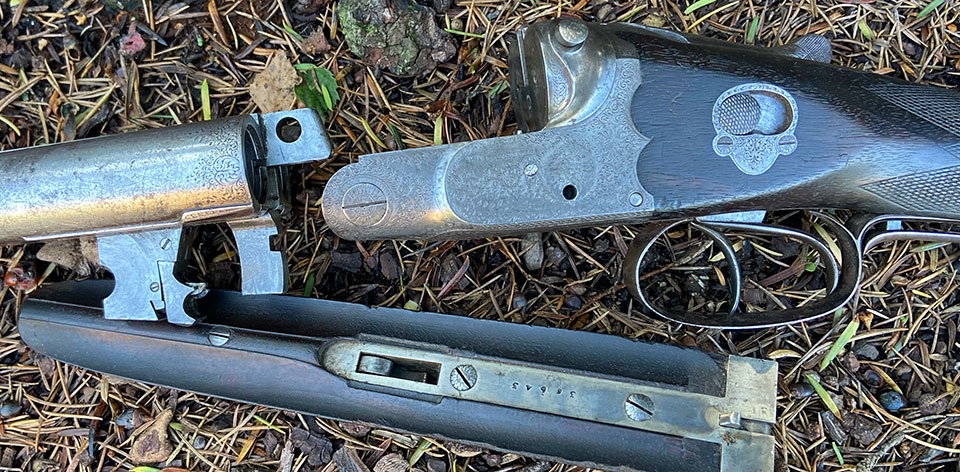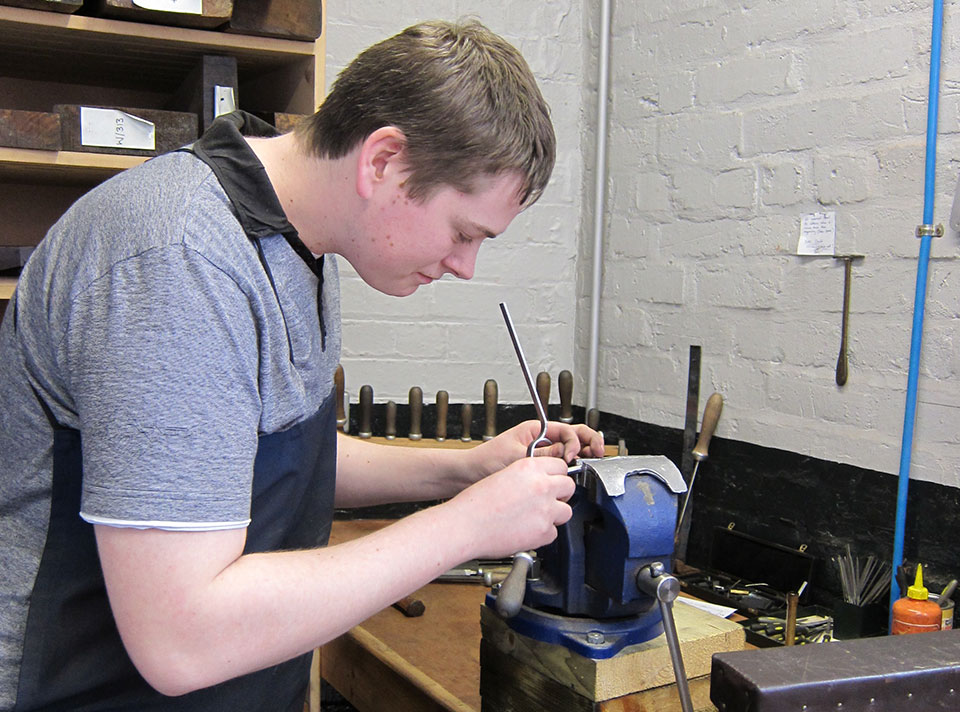Twenty five years ago, when I started dealing in English guns actively, I was living in London. The capital was, at the time, home to all the major gun auctioneers: Holt’s, Bonham’s, Christies, Sotheby’s.
Then, in my early thirties, I met and worked with several gunmakers in their fifties and sixties, all of whom had apprenticed at Purdey or at Holland & Holland, Webley or Greener and worked there for a decade or more and then set up in business on their own account as outworkers to the trade. That means they continued to build best guns for the big name makers but they did so from their own workshops and invoiced for the work according to the rates they set.

This system has always been part of how the British gun trade works. It provides flexibility to the big firms, who are not obliged to find work for their outworkers when times are lean but can use them to keep up with demand when the order books are busy.
For the outworker, the advantage is that he gains autonomy and in theory can maximise the financial advantages of running his own business, rather than being a wage earning employee.
For the operator of a gun dealing business, with a repair service, often in need of a full restoration job on a newly discovered old classic in poor condition, these men have always been essential. For obvious reasons we can’t go to Westley Richards or Purdey and ask them to do trade rate work for us, but we can enrol the services of the same outworkers they use.
This system has always been flexible and fruitful. Gun-making is broken into different specialities: barrel making, stocking, actioning, engraving, finishing, regulating, blacking and browning, chequering etc. Some men specialise in a particular job and become ‘go-to’ destination for that within. the trade, such as specialising in shaping and fitting leather covered recoil pads or sleeving barrels, or colour case-hardening.

The men I met back in the late 1990s had been apprentices in the early 1960s and they were trained by a ‘gaffer’ whose own lineage at the firm often stretched back to the mid 1920s, when they were trained by men whose careers began when Queen Victoria was on the throne and who had been present when many of the mechanisms and patents we see on vintage British guns were novel or at least current.
The very disciplined way they learned to make guns from simple steel forgings ensured they had the skills, the engineering chops and general gun-making education to create parts from nothing, solve complex problems with unusual mechanisms and were part of a network of gunmakers who talked often and helped one another to get difficult jobs done.
The answer to almost any question regarding restoration was “Yes, I know a man who can do that.” Pretty much anything could be made or fixed, it was simply a matter of time and money.
Over the years, it has got harder to maintain these services. Many of the guns we deal with are now, in all honesty, worn out, or approaching that state. So too are many of the brilliant gunmakers upon whom we have relied these last three decades. Men I met in their fifties are now in their eighties. Forty year-olds are now seventy. Some are no longer with us, others have retired, more still about to retire in the next 18 months.
Bench-work is hard work. It requires mental acuity because there is no room for error when creating parts for best guns or adjusting complex mechanisms precisely so they work perfectly. It is also physical work and requires strong hands and forearms to apply the tools with the necessary firmness and precision. When the memory begins to fade and the hands lose their grip, the job goes away.

Not only are we losing the masters of the bench and their deep-rooted knowledge, they are not being replaced with men trained like they were. There are certainly top class gunmakers making their names in the current generation but they are not steeped in the lore of the Victorian shotgun as their forebears were. The specialist barrel borers and spring makers and lock makers are a rapidly diminishing breed. New guns are made from kits of parts created by computer numerically controlled machines and spark-erosion.
Understandably, many of the new generation prefer to work on new guns. They make more money that way. The work arrives from one of the big firms. It is a familiar mechanism, the outworker receives it at an agreed stage of its construction, does his part to the next stage and sends it back, receives prompt payment and starts the next one.
Time is money and all the time the old boys spent earnestly chatting to their mates on the phone about the solution to a problem with a Woodward single trigger from an 1890 side-lock, or how to source or make and fit a new mainspring to a Lancaster ‘Wristbreaker’, is dead time, during which the clock runs but money is not made. When your two hands are your means of income, they need to be earning every minute of the working day.
Not only are the skilled men now in short supply, the materials we have long relied upon are also dwindling. All my life, I have known old workshops with stashes of ‘new old stock’ salvaged (lets say that!) from the old factories of Birmingham or London. If you needed a special wide, flat pigeon-style rib for a 16-bore side-lock restoration, someone would invariably magic one up from his special store. These supplies have all but run out and the machines the Victorians used to make them are no longer running. Modern production in many cases cannot replicate the quality.
Even the right kinds of steel, driers for stock oil, ebonite and other supplies are disappearing. Outworkers struggle to source what they need to make a limb or a hammer or a spring. While welding has improved immensely in recent years, specialist welders to the gun trade, those who understand the guns, are also declining. All this makes it ever harder to keep our vintage guns shooting.

What does the future hold? We can only hope that enough of todays’s young gunmakers develop a passion for the older classics and a desire to learn about the plethora of single trigger, lock, bolt, cocking and ejector mechanisms they will encounter if they venture into the world of old guns. If they don’t, I fear the finest guns of the past will become museum pieces.
Published by Vintage Guns Ltd on




